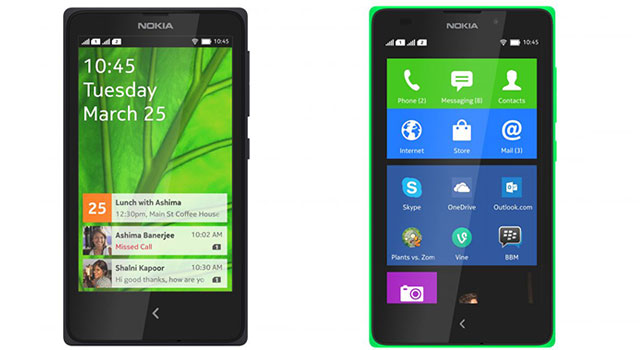
At this year’s Mobile World Congress in Barcelona, Spain, Nokia took a game-changing step in the affordable smartphone market with its X series of phones underpinned by the open-source Android operating system. Fitting neatly into the current space between its Asha range of feature phones and Windows Phone Lumia devices, Nokia’s X range is aimed squarely at capturing smartphone market share, with a focus on emerging markets.
With access to a vast array of Android applications via the Nokia store and through a variety of other localised Android stores, such as Russia’s Yandex, the company intends to take advantage of the success of the Android ecosystem while allowing differentiation through the use of its own user interface and services.
The company has created an interface that has the look and feel of a Windows Phone device, using the “tile” approach to its app icons and Web links (although they are not “live”), while building on the mapping, notification and purchasing application programming interfaces used in its other devices – and it allows access to Microsoft cloud services.
This may all be a few years too late, but it is a much needed move by Nokia to recapture share of the smartphone market by becoming part of the Android ecosystem. By using a number of key elements that have been highly successful in the smartphone industry over the past few years and overlaying this with some of its own significant attributes — including brand strength and quality industrial design — Nokia has bridged the gap to its Lumia smartphones by creating an irresistible product offering for the affordable segment.
Three models being launched in the X range — the X (with 4-inch screen), the X+ (also with 4-inch screen but with more RAM) and the XL (with 5-inch screen). Their wholesale prices fully reflect the desire to target the affordable segment as they will go to market at the aggressive €89, €99 and €109 respectively. In a further nod to acceptance in the emerging markets, all models are dual-Sim and have 3G connectivity.
Not only will the pricing of the X series heighten the interest of mobile operators in the emerging markets, but also bring improved competiveness to the low-cost Android segment, which is currently controlled by Samsung.
Over time, it is clear that Nokia will push down the price of these Android-based devices further, with the eventual aim of displacing its Asha range of phones. For the time being, it seems that Nokia has no intention of moving them up the price tiers where it would compete with its Lumia products, or to throw itself into the fast-growing low-cost 7in Android-based tablet market. For now, though, Nokia has at last become part of the Android conversation and it won’t be long before the X is the talk of the town.
- David McQueen is principal analyst at Informa Telecoms & Media

